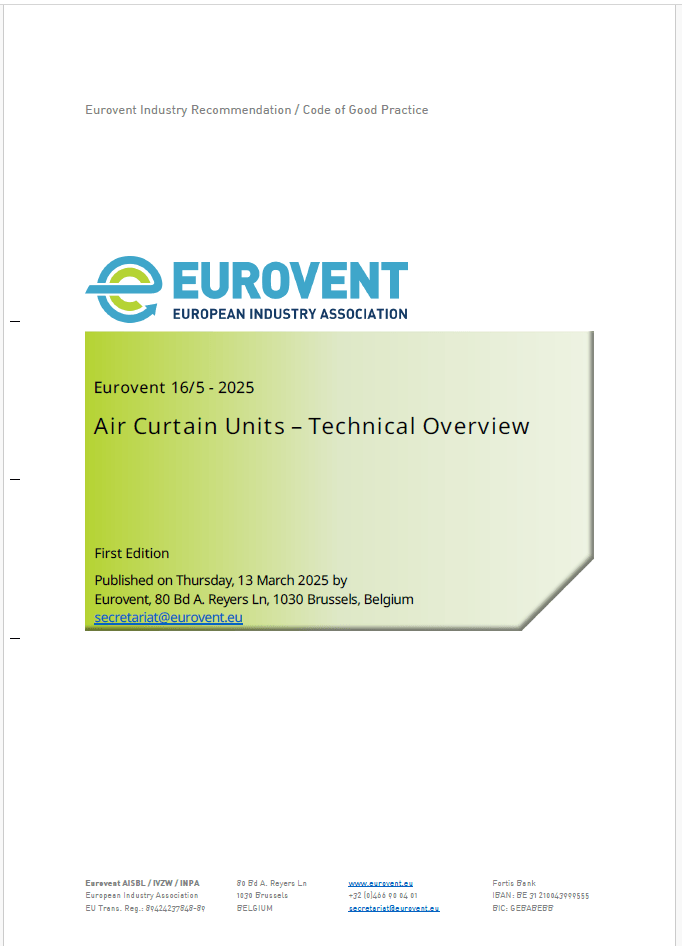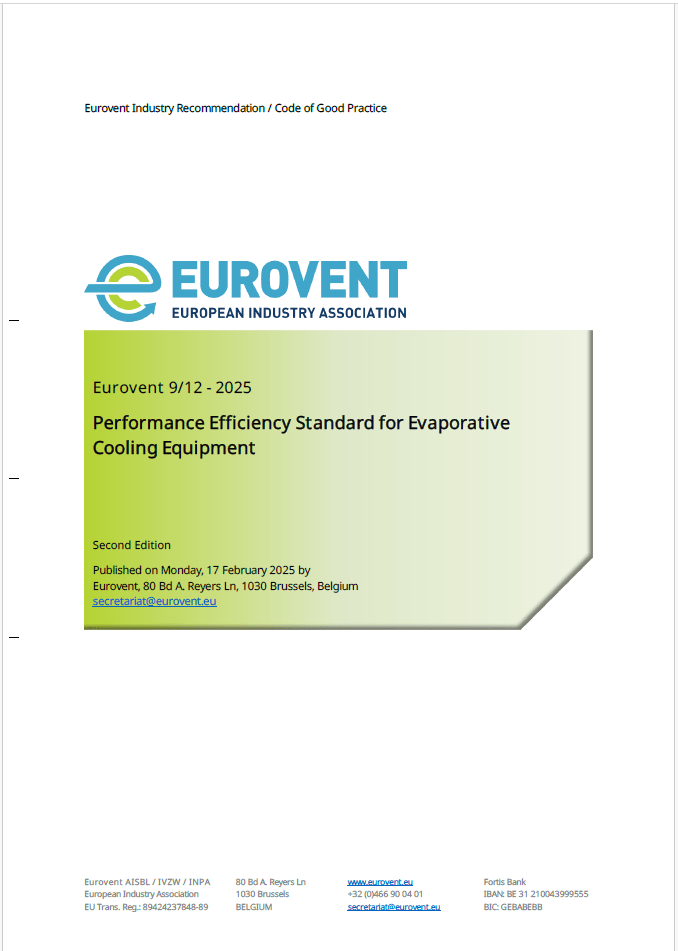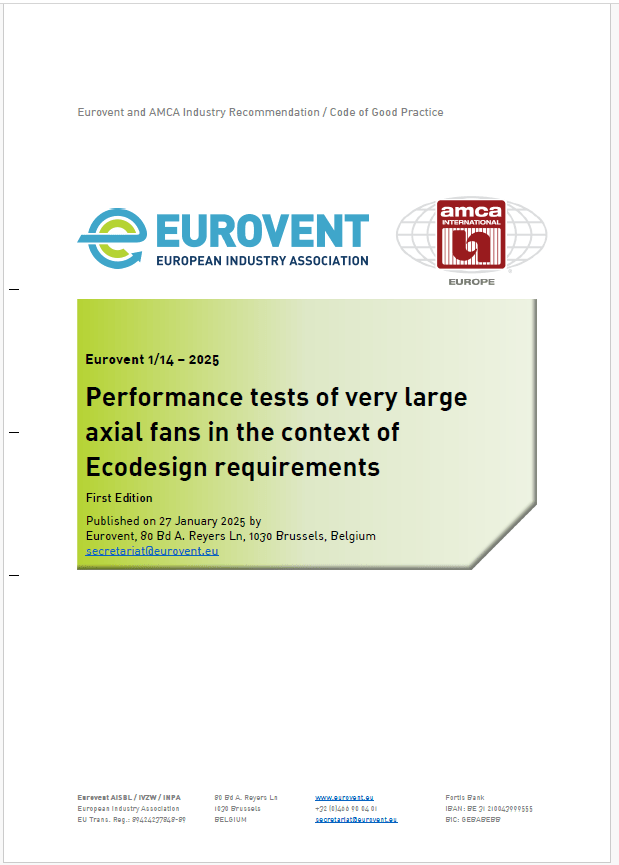Sylvain Courtey, President of Eurovent Certita Certification, outlines the function of certification, how they differ from other schemes in the HVACR market and the organisation’s move to become more inclusive in accommodating conditions in warmer climates.
Eurovent is one of the globally recognised certification schemes in HVACR. What functions does certification fulfil in our industry?
The function of the certification is to promote fairness in the industry – our core value is truthfulness. We are encouraging manufacturers to provide correct values to their customers. As we know, the HVACR industry can be very competitive, and even for an excellent product, it can be complicated, especially when it comes to navigating price. There are a lot of temptations to play a little bit with figures and numbers and be vague with technical specifications.
We are here to make sure customers of the HVACR industry receive the correct performance data and are armed with the right figures to design and evaluate the energy efficiency of buildings effectively. Having accurate information is also essential for achieving better indoor air quality (IAQ), a crucial objective for Eurovent Certita Certification and the industry. With what we are doing, the customers will be empowered by having correct values that allow them to design and choose the right product for buildings that exactly match their requirements – not too small, not too big.
Certification will also help them to better evaluate the performances of products in the market. There is a natural trade-off between price and quality depending on the building they want to have. Sometimes, buying decisions are price driven. Sometimes they are quality driven. But with certification, quality-driven selections can be backed with factual data checked by a third party.
How does Eurovent stand out from other certification schemes?
As Eurovent, we have included unique and specific features across our programmes. For example, our certification takes into account sound power levels. As a European organisation, we have a long tradition of building equipment and buildings with good indoor environmental quality (IEQ), with a strong emphasis on comfort in terms of sound insulation, temperature, and humidity.
Energy efficiency, of course, is a core priority. Europe has the highest standards in terms of energy efficiency, and we have implemented energy labels to help customers select units based on their energy efficiency quickly and straightforwardly.
Our proposed energy labels are a way for customers buying these products to compare energy performance quickly. The energy labels, from A+ to E, are evaluated under strict conditions, and we go to great lengths to ensure our energy labels have real value. In fact, only 1% of the best units can have the A+ classification, and only 5% can be A.
Another feature that sets the Eurovent Certification apart is our tradition of implementing factory audits within our programme. It’s vital to check how the products are manufactured and ensure that what is delivered to the customers is the same product. We test independently as a third party while using independent laboratories. This is something that can be considered unique to us and not in other certification schemes, which tend to rely on participant laboratories, which are the laboratories in the factory of the participant. There are cases where we rely on those laboratories, but not as the sole source. We also ask for tests in independent laboratories to validate performances; we use a network of laboratories in Europe and we look forward to have strong partnerships with laboratories outside of Europe.
As an organisation that is based in Europe, which is a region that is leading in activities related to energy efficiency and indoor air quality we bring the knowledge and expertise of our members to the further inform our activities.
The Middle East lacks market surveillance. Thus, regulatory bodies usually require premarket testing to ensure compliance with their regulations. Is that a safe way to go?
Although premarket testing can be considered a traditional way of testing things, we don’t believe this is an efficient approach to ensuring the quality of the product that enters the market. When you test one product one time, it is not always the case the same product will have the same value and performance years afterwards. Because when you test one product one time, there is a possibility that the product tested was only a prototype or an item delivered straight from the R&D department. It does not guarantee that the same product will be provided to the market years afterwards.
We believe in systems where there is a long-term and regular surveillance activity. For this reason, we have annual surveillance activity; there are tests and audits to ensure products delivered to the market remain compliant with what is declared. That is why it might not be sufficient to rely only on type tests for years.
Would certification schemes like Eurovent be a viable option to ensure compliance, given the recurrent testing and auditing?
What we do is a voluntary certification. It must be understood that manufacturers voluntarily come to us to be checked and evaluated and get a third party to verify their data. It’s not mandatory; we don’t want it to be mandatory. It is our mission to promote a part of the industry that make an effort to undergo voluntary certification, and we think our activities and initiatives would be of great value and help market surveillance authorities.
Market surveillance authorities can rely on our activities, underpinned by technical expertise and a robust evaluation process, regular tests, and audits. As a result, these organisations can look at the demographic that is not certified to focus on their evaluation. Because certified products already undergo stringent processes, market surveillance can focus on specific areas of the industry which is not certified, which might need more attention.
In the past, it was often argued that certificates would usually be based on T1 conditions and have less relevance in the Middle East. Eurovent is now shifting to an additional hot and humid condition. What are the reasons behind this decision, and what do you expect from this move?
We are doing our part to be more inclusive of all the regions. Our decision to have the “summer label”, which includes hot and humid conditions in the air handling unit programme, was driven by this. It allows us to evaluate how efficient a unit can be in energy recovery in regions with a greater requirement for cooling and humidity recovery. We already include T1 condition in our certification programmes for chillers and VRF. Step by step, we are moving to include additional conditions that are relevant for those markets and these regions.
There are still widespread misconceptions in the market when it comes to certification. What can be done to develop better awareness and understanding of product certification and what it actually stands for?
It is our duty to communicate more about what we are doing to the market. There are inherent challenges when it comes to communicating the importance of certification. Often people think there is no need because it is evident manufacturer must provide the best performance. Still, people don’t realise the level of complexity of the products we are working with and how difficult they are to assess, individually and when comparing products. It’s not only a matter of avoiding cheating in terms of wrong or inaccurate data, it’s also about trying to help the market understand in an easier manner what’s behind these very intricate products.
We work with standards that make it possible to compare products with each other, which is essential. As a certification body, we try to disseminate these standards and benchmarks so the industry can rely on them. Additionally, we provide the added value as a third party to verify these claims.
We must communicate the value of certification to every stakeholder. Thanks to the certified manufacturers` efforts to raise awareness, the message is slowly coming through. Still, we must help them when it comes to educating markets. Certification provides confidence in products. This is relevant to not only the manufacturers but is also essential to all other stakeholders, from consultants to investors, contractors, the end-user and also the government.


















